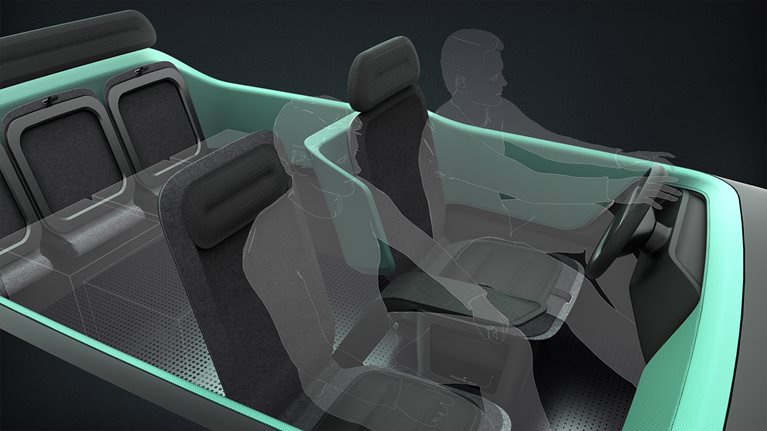Ridesharing, as a way of getting around, is here to stay. “We’ve seen an explosion of e-hailing and ridesharing platforms in recent years that has changed the transportation landscape in urban areas,” says Jeff Salazar, partner with LUNAR, a design firm acquired by McKinsey in 2015 and now part of McKinsey Design. Yet ridesharing accounts for only about 1 percent of all vehicle miles traveled in the United States, with significant room for growth—“so we joined forces with experts from our Automotive & Assembly Practice, including McKinsey partner Russell Hensley. Our core team of six set out to create a ridesharing experience that could appeal to a wider range of people, stay relevant over time, and leverage emerging technologies,” explains Jeff.
“We wanted to push the thinking around ridesharing and project an opinion of our own on where we think it could go across near and long-term horizons,” says David McGaw, recent Insights director at LUNAR. What started as 16 potential ideas, ranging from transportation of larger groups to manufacturing of cars, eventually narrowed down to 2 plausible vehicle design concepts.
One is a new vehicle interior concept that enables more ridesharing scenarios than conventional privately owned cars. Its reconfigurable interior includes more back-seat room for easier entry and exit, a size-adaptable booster seat for parents traveling with children, and space that can be used for wheelchairs or for package delivery in off-hours. The second concept is designed specifically for commuters—providing a comfortable, highly tailored ride to work that is more relaxed than driving a personal car and comparably priced to mass transit. The van-like vehicle features rotating swivel seats that allow for either socializing or privacy, allowing passengers to talk to their neighbors, do work, relax, or just close their eyes.

Both designs integrate app experiences that allow riders to control in-vehicle features such as music and temperature from their phones. A rear-seat display of the route is also available so riders don’t need to use their data plan to check directions and maps while en route. An integrated social platform also allows for passengers and drivers to share personal background/interest profiles to help create a more pleasant and social ride experience.
What inspired these two concepts? “We rode along with real commuters and rideshare passengers—25 to be exact— and conducted eight driver interviews to understand what’s working and where there are opportunities to improve the current rideshare experience,” recalls David.
“While we were collecting user insights and discussing potential design ideas, our automotive experts analyzed and filtered the data, such as how dense a population needs to be for a shared commuting service to be viable in the area,” explains LUNAR designer Nick Ross, who comes from a background in construction and heavy machinery. “We put design behind our ideas, and our automotive team backed it up with strong fact-based analysis, such as where people live and commute and how crowded the roads are,” adds fellow designer DK Lee, formerly of BMW.

“The six-month-long project reflects the integration of truly disparate skills within the firm,” says Nick. “We engaged with more than ten experts from the Automotive & Assembly Practice on the mechanics of cars and manufacturing principles.” DK adds: “All along, the LUNAR and McKinsey folks were looking at the same information but through very different lenses. Where we met in the middle highlighted the opportunities.”
Anyone or any company—from automakers and auto parts suppliers, who could work together, to municipalities looking to tackle future mobility and transportation challenges—can draw from these insights and apply them as they wish. The team sees the greatest potential if ridesharing expands beyond the way it’s primarily used today—by young adults in urban areas—toward suburban families and into adjacent industries. Given the continuously changing and expanding nature of the rideshare category, this work represents the first step in the journey to exploring broader solutions. “The key for us is that any potential solution that enhances the promise of future mobility will benefit from bringing a ‘whole-brained’ approach to solve the problem,” says Jeff. “Any ridesharing solution needs to be inspired by user input, backed by analytics, and delivered in ways that resonate with—and delight—the end user.”